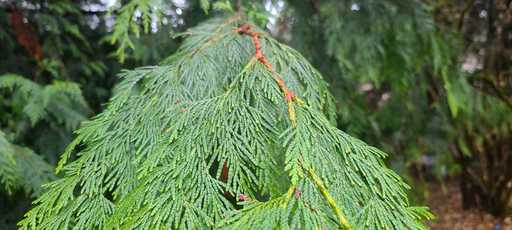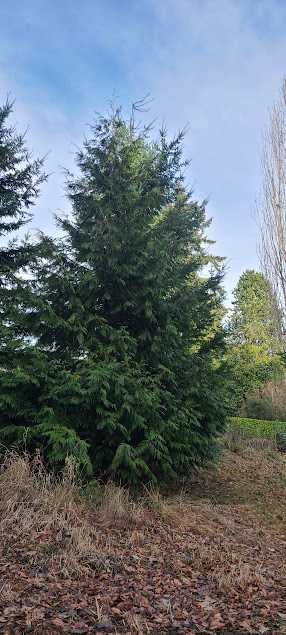Native Plant Spotlight - Western Red Cedar (Thuja plicata)
What is Western Red Cedar?
Western red cedar (Thuja plicata) is a native evergreen tree that grows very large. The tree is characterized by its dense swooping branches. The needles of this evergreen are scale like that overlap in a shingle like arrangement. The needles are aromatic. The bark of the cedar is brownish grey and form long fibrous strips that can easily be peeled off. This great tree is significant for wildlife across the Pacific Northwest. It has also been a very culturally important plant for the indigenous peoples of the region due to its many uses. Consider reading Western Redcedar “Tree of Life " Jeri Chase that further discuses the trees versatile nature.
Western Red Cedar as a Wildlife Plant
This large tree help create important habitat for a variety of wildlife species. Its large branches provide cover and and nesting places for birds including owls, swallows and chickadees. The cones provide seed for birds and rodents. The foliage provide food for deer and elk, especially during winter when food is more scarce. When the tree dies it continues to give back to wildlife. The rotting stumps and logs can be used for den sites for bear and other mammals. The decomposing tree will provide nutrients to the surrounding forest floor. When these trees are grown in riparian habitats, the shade helps to regulate stream temperatures improving fish habitat. All of these traits make this a very important tree for wildlife habitats.
Western Red Cedar Growth Habits
The western red cedar will grow up to 60 meters tall over time. It can grow dense providing large amount of shade beneath its boughs. The Western red cedar can grow in full sun to part shade. The tree requires well drained soils that remain consistently moist. Consider watering the tree in the summer for 3 or more years to help establish.
Unfortunely, the Western red cedar has been struggling in recent years. With climate change making weather patterns more erratic and summers growing hotter and dryer, the cedar populations have been declining. Consider reading Melissa J. Fischer’s Blog Post (DNR) Western Redcedar East of the Cascades: A Species in Decline? for detailed information regarding the recent diebacks and what is likely to be causing this decline.

